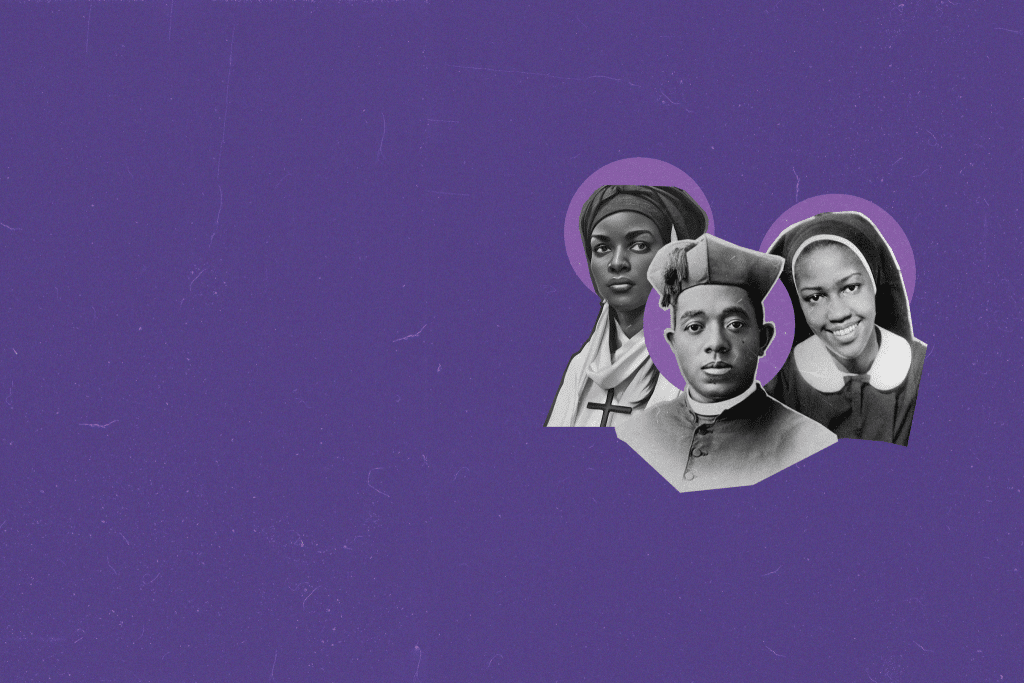“Making a way out of no way” is a saying I’ve heard hundreds of times from my mother, grandmother, uncles, aunts and neighbors. It is a saying that many African American households pray to keep moving forward in tough times. So often is it said that the National Museum of African American History and Culture set up ongoing and virtual exhibits—“Making a Way,” filled with art, documents, images and stories, which show how a people used collaboration and resiliency to challenge injustice and create a way out of no way (There are also some incredible Gospel songs: listen here and here).
The saying, “making a way out of no way,” reflects the story from the book of Exodus, where God helped Moses make way for his people where there was none: “The Lord said to Moses, ‘Why do you cry to me? Tell the people of Israel to go forward. Lift up your rod, and stretch out your hand over the sea and divide it, that the people of Israel may go on dry ground through the sea.’” Exodus 14:15-16.
Venerable Mother Mary Lange
Mother Mary Lange, a devout Black Catholic woman from Cuba, arrived in 1813 in Baltimore. She saw very few educational opportunities for Black children, free or enslaved. Public education was often denied free children, and teaching enslaved children could get one arrested. She felt strongly that Black children needed to be educated, but how could she do that under such circumstances? She opened a school in her home with her friend Marie Magdaleine Balas (Sister Frances OSP), and hundreds of children were served.
Mother Lange was happy to see this dream realized but desired to be a consecrated woman, which would be tricky since Blacks were not welcomed into religious orders in the 1820s. However, with the help of Father James Hector Nicholas Joubert, she founded the first African American religious congregation, the Oblate Sisters of Providence.
Mother Lange prayed daily before the Blessed Sacrament and encouraged her sisters to do the same. Operating a school in a slave state was tough; once, a child was taken by bounty hunters and sold. Yet, Mother Lange, undeterred, kept the faith and continued her ministry. She said of herself and her sisters, “Our sole wish is to do the will of God.” Suggested reading: “An Hour with Mother Mary Lange” by Sr. Magdala Marie Gilbert.
Venerable Father Augustus Tolton
Another holy Black saint to make a way out of no way was the Venerable Father Augustus Tolton. Born enslaved and baptized Catholic, he overcame many racial barriers to become the first openly Black priest in America. (Father James Healy was the first Black priest and later the first Black bishop ordained in America, but he passed for white, and didn’t admit his Black heritage publicly.)
Father Tolton was a good, humble, devout student with a strong prayer life. He attended Mass frequently and served at his parish. During this time he discerned that he was called to become a priest, however he was rejected by every Catholic Seminary to which he applied. Then, Franciscan Father Michael Richardt, with the help of the provincial, appealed to Rome on Father Tolton’s behalf. Success! Augustus went to Rome to prepare for the priesthood and was ordained on Saturday, April 24, 1886. Through faith, confidence, preparation and perseverance, a way was made for God’s son to become a priest. Suggested reading: “An Hour with Augustus Tolton” by Maurice Nutt CSsR
Servant of God Sister Thea Bowman
Born Bertha Elizabeth Bowman in Mississippi in 1937, Sister Thea Bowman was the only child of a teacher, and physician. Though her parents were blessed materially, they lived modestly and dedicated their lives to the less fortunate.
Growing up Bertha Elizabeth attended segregated public schools and though she was gifted, didn’t do well at the poorly-staffed and under-resourced school. In sixth grade, Bertha’s parents enrolled her in a Catholic school for African Americans, staffed by Franciscan Sisters. She excelled in her academics and adopted a strong prayer life there.
This quality Catholic education didn’t shield her from the injustices of the 1940s and 1950s, including segregated facilities, inequality, racism, and verbal and physical violence against Black and Chinese persons. But there was something about the Catholic faith that inspired the child Bertha Elizabeth — she liked how Catholics loved those whom they served, and how they put their faith into service. And she soon converted to Catholicism.
At age 15, Bertha Elizabeth told her parents of her wishes to enter the convent. Her parents said no at first but relented after their daughter’s persistence. During her years in the convent, she was often alone in the white congregation, but had her Negro spirituality and history to keep her going. She was assigned the name Sister Mary Thea during her formation. She used her gifts as a vocalist, charismatic, liturgist, scholar and preacher to help build intercultural awareness and build up the Black Catholic community. She dressed in African-styled clothing with brightly colored garments and displayed African art in her home and church. She was her authentic self. Read more.
These are three of the six Black Holy Men and Women on the road to sainthood including Venerable Henriette Delille, Servant of God Julia Greeley and Venerable Pierre Toussaint.
Holy men and women who continued to serve God, and relied on him to help make a way, pray for us!
